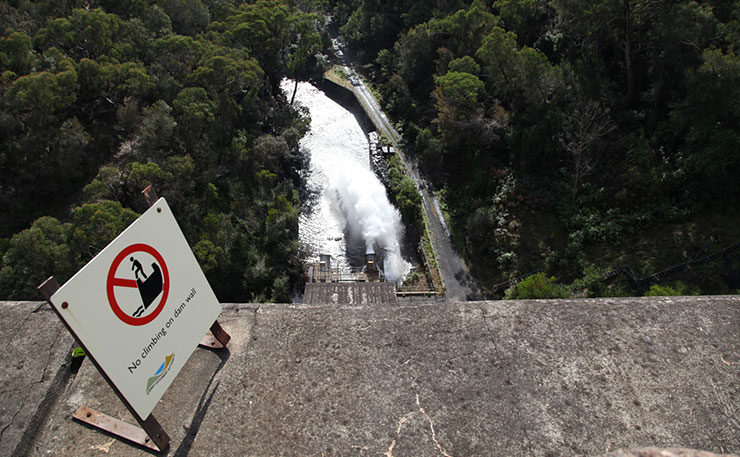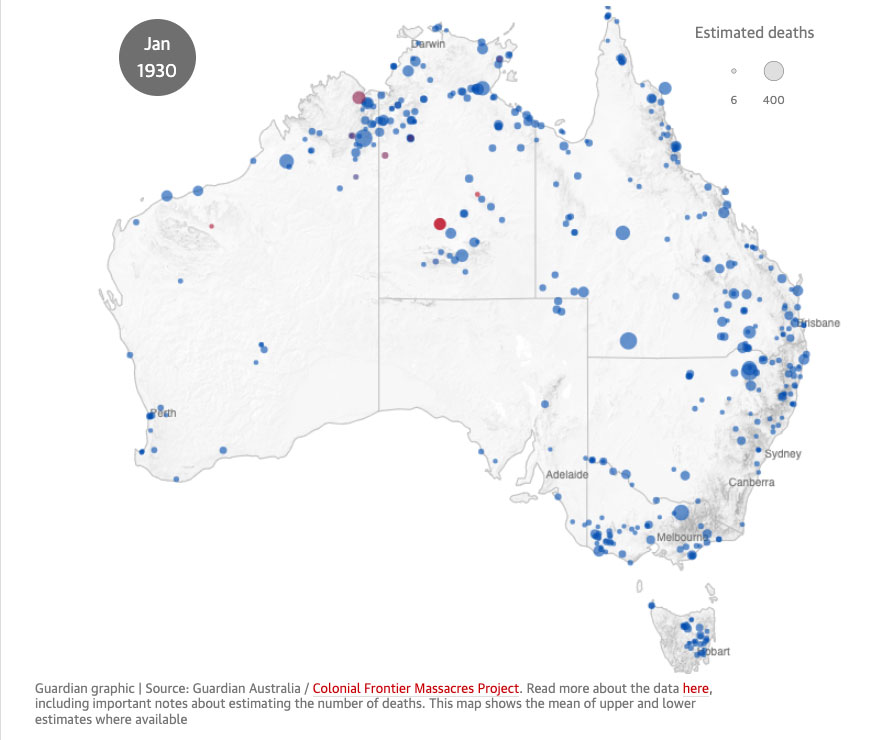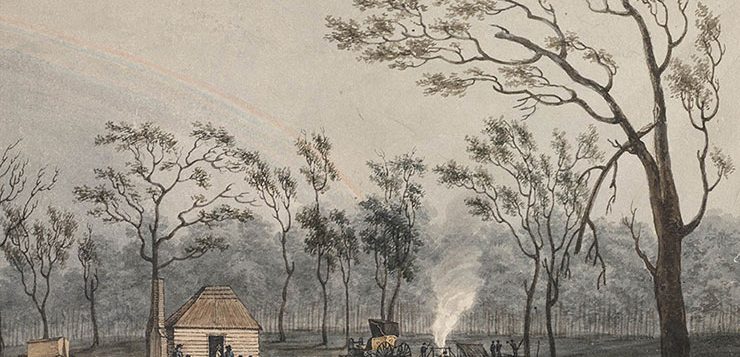The site of a massacre perpetrated on the Dharawal and Gundungurra people by the British military on the outskirts of what is now Sydney has finally been formally recognised by the NSW Heritage Council, with a State Heritage Register listing.
The site is at Appin, about 60kms south west of the Sydney CBD. The massacre occurred just over 200 years ago, and saw British troops shoot and kill Aboriginal men, women and children, and drive others over a cliff.
Records with the NSW Government read: “…Under orders from Governor Macquarie, Captain WBG Schaw, Captain James Wallis and Lieutenant Charles Dawe of the 46th Regiment led expeditions against ‘hostile natives’ in the Nepean, Hawkesbury and Grose valleys and the Liverpool district.
“On the early morning of 17 April 1816 at least 14 people of the Dharawal tribe were killed when James Wallis’ detachment encountered a camp at Appin near the banks of the Cataract River.”
IndigenousX.com.au documents the massacre further here.
“A first-hand account from the diary of James Wallis reveals that under orders from Governor Macquarie, he along with Captain WBG Schaw and Lieutenant Charles Dawe of the 46th Regiment led expeditions against Aboriginal people in the Nepean, Hawkesbury and Grose valleys and the Liverpool district. He recounted that they crept up on the Aboriginal people camped near Appin in the early hours of the morning and fired upon them,” IndigenousX reports.
“It was recorded that fourteen Aboriginal people were killed which included women, children and elderly and there were five women and children captured.”
The Dictionary of Sydney records the massacre in detail.
“Following tip-offs, Wallis marched the soldiers to various farms in the area, and then back up to Throsby’s Glenfield, invariably finding abandoned camps or nothing at all. Finally, a message arrived that Aboriginal people were camped at Lachlan Vale.
“At one o’clock on the moonlit morning of 17 April, Wallis’s troop marched back down to Appin. There was no-one at the campsite when they found it, but the fires were still burning. Someone heard the cry of a child. Wallis immediately ‘formed line rank entire’ and the soldiers ‘pushed through a thick brush’ towards that cry.
“They were also heading directly towards ‘precipitous banks of a deep rocky creek’, the gorge of the Cataract River, 60 metres deep. The line of men pushed on, the dogs set up a frantic barking. As the soldiers opened fire on them, the Aboriginal peole ‘fled over the cliffs’ and were smashed to death in the gorge. Others were wounded or shot dead. The soldiers secured only two women and three children.
“They counted 14 bodies ‘in different directions’ including that of an old man, Balgin, and more women and children. The bodies of two warriors, Durelle and Cannabayagal were hauled up to the highest point of the range of hills on Lachlan Vale and strung up in trees.”

Details of a monument to the massacre are available here.
Heritage NSW Executive Director Sam Kidman said the Appin massacre, its lead up and aftermath, was a dark turning point in Australian history, and had profound consequences for Aboriginal communities and their way of life.
“The State Heritage Register listing of this important landscape recognises the truth of past injustices to Aboriginal people and provides an opportunity for healing and reconciliation,” Mr Kidman said. “Protecting this landscape supports the continuation of cultural practices and community wellbeing.
The Appin Massacre cultural landscape was co-nominated for listing on the State Heritage Register by the Heritage Council of NSW and the Aboriginal Cultural Heritage Advisory Committee (ACHAC) for its shared Aboriginal and non-aboriginal cultural heritage values.
Listing on the State Heritage Register provides formal legal recognition that an item or place is of State heritage significance, and means that the landscape’s contribution to the identity and wellbeing of the people of NSW will be protected and conserved.
ACHAC’s former Chair, Glenda Chalker said the Appin Cultural Landscape is of great cultural significance to the Dharawal and Gundungurra people.
“It is a place of sorrow when remembering those who were lost before, during and after the 17th April 1816. This landscape is now protected from development, so future generations can learn of the atrocities and injustice to our ancestors.
“It wasn’t the first massacre and it certainly was not the last in Australia,” Ms Chalker said.
“Aboriginal culture and history belongs to all Australians, not just the Aboriginal people of Australia. It always was and always will be Aboriginal land. We have never ceded sovereignty.”
The cultural landscape encompasses topography and natural features that have sacred significance to the Dharawal traditional custodians and the Gundungurra people.
The State Heritage Council said more information about the Appin site can be found on the Heritage NSW website. However, a search of the NSW Heritage site seems to reveal just two massacre sites in total – at Myall Creek near Barraba, and Hospital Creek near Brewarrina (the Appin site doesn’t appear to have been added yet).
Guardian Australia’s work in uncovering massacre sites looks vastly different, and much more informed. You can find their project here.

Donate To New Matilda
New Matilda is a small, independent media outlet. We survive through reader contributions, and never losing a lawsuit. If you got something from this article, giving something back helps us to continue speaking truth to power. Every little bit counts.




